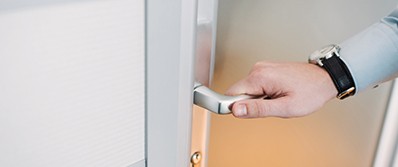Bacteria-Killing Plastic Could Reduce Infections

By Mike Howie
When you’re sick and go to the hospital, you expect to get better — not pick up yet another infection. But that’s what happens to about one out of every 10 hospital patients around the world.
The many surfaces in hospitals — from phones and keyboards to bedrails and doorknobs — are touched by hospital staff and patients every day. If these surfaces become contaminated with pathogenic bacteria, the microbes can be unintentionally spread, along with the risk of infection, to other surfaces, coworkers, or patients.
Although this can happen anywhere, it’s especially dangerous in hospitals, where a large population of people are already sick or otherwise compromised. That’s why doctors and researchers are always looking for new ways to keep hospital surfaces cleaner, and why Ethel Koranteng, a chemist at University College London in England, has worked to develop a new type of surface that can kill bacteria.
Fighting Germs with Light
Koranteng and her team made the new surface from common polyurethane plastic, but the important part is what’s inside. The plastic is embedded with tiny semiconductor nanobits called quantum dots and a light-sensitive dye called crystal violet. Together, they use light to create a highenergy oxygen molecule that works as a potent antibiotic.
Engineers in Asia created a similar surface decades ago, but it required UV light, which can be hazardous to the skin and eyes. Koranteng’s surface works with ambient lighting, which is much safer and far more practical.
The team tested their new surface against common bacteria with impressive results. It killed a complete strain of Staphylococcus aureus, 99.99 percent of Escherichia coli, and 99.97 percent of methicillin-resistant S. aureus (a strain of S. aureus that’s immune to many antibiotics).
In addition to being effective, the surface is also versatile. It can be made into a flexible film that could be used to cover keyboards and instrument panels, or molded into rigid casings that could protect phones, bedrails, doorknobs, and more.
The team’s invention could potentially play a part in helping to reduce the risk and frequency of infections acquired in hospitals, which would make a meaningful difference in the lives of patients and doctors around the world.
Discuss Questions
- Where else might the use of a surface like this prove beneficial?
- How else can hospitals reduce the risk of hospital-acquired infections?
Vocabulary
- Antibiotic
- Bacteria

